How Are History Documentaries Made?
Pulling back the curtain on the magic of TV.
Croeso (or Welcome), to another edition of ‘A Chronicle of Dragons & Cats’, and thank you for reading! If you have already subscribed, diolch yn fawr for coming along on this journey and I hope you’re enjoying. Any likes, comments and shares are always appreciated. It’s not easy getting history out to the masses at the moment!
If you haven’t subscribed yet, please take a look through the newsletter using the handy navigation tabs at the top of the homepage and if you like what you see and want more, then click the subscribe button below. Each post is then sent out directly to your email and it’s FREE!
If you’re reading this, the chances are you are a fan of history, and enjoy consuming television documentaries that cover your historical period of interest. But how are these documentaries put together, and what are they like to be part of? In this article, I’m going to pull the curtain back somewhat on the production process, and bring you in on the magic, because I think it’s a misunderstood medium that often breeds some unnecessary commentary online.
This is especially the case when it is around a contentious issue in which people are invested and divided in their views. This isn’t helped, of course, when promotion is driven by sensationalist claims to attract viewers. This often manifests itself in abuse given to participants, when the criticising party is not critiquing with full knowledge of the art of documentary making. We should always try to remember that behind every production are normal, everyday people just trying to promote heritage and make their family, friends, and themselves, proud.
Take the two recent Princes in the Tower documentaries which carried opposing conclusions, of which I was involved in both. Both have merited much comment in the days after they aired. In the first, I was filmed for 6 hours but because what I discussed (namely the fair doubt that the Lambert Simnel and Perkin Warbeck were anything but imposters) went against the projected narrative of the show, this was cut down to less than a clumsy minute and half cameo. Many felt, and I agree, this meant that there was no dissenting voice in what amounted to a one-sided show.
In the second, I was again filmed for an entire day, and during my answers attempted to give a well-rounded, nuanced view of things taking place in 1483, such as discussing the merits of the precontract that gave Richard III his claim to the throne, or other potential suspects like Henry Tudor and the duke of Buckingham. Again, due to the narrative the show ultimately took, these were cut, or omitted completely, in a way that didn’t quite give my views their full context. Cue outrage from certain quarters.
Am I mad about this? Not at all. This is what doing TV is about, and is a reality shared by every single contributor to these shows. This is the game, and it’s exciting to be part of. When they shows have very limited time to get across the central argument they are going for, it is to be expected. If every bit of recorded footage was included, we’d need a 30 hour programme! But this, it seems, doesn’t transmit to those on social media with pitchfork in hand who think they know better, sharing their vindictive and often hypocritical views ignorant of the reality of the situation. So, let’s go.
What is the purpose of historical documentaries?
Well, it is to inform, certainly, but primarily entertain. If you are getting your history solely from a one-hour documentary (well, 42 minutes on commercial channel) and expect it to be comprehensive, then I suggest, to use a Dan Jones quote, you’ve made a category error – history television should serve as exposure for ideas and a trigger to delve into a subject deeper, perhaps through books or articles. They are for the casual viewer. Some people may not like this, but that is the driving purpose behind nearly every form of TV, including historical documentaries. You are not, of course, compelled to watch. So, casual informative entertainment for the masses, I’d say.
Why do historians film these documentaries?
Well, a lot of what historians do, whether academic or public, is done in private by yourself. Hours each day sitting at a computer typing up your research, or spent navigating the labyrinths of the great libraries and archives tracking down obscure journals to justify a minor point most people will gloss over. This is history writing, and we love it otherwise we wouldn’t do it. But it can get lonely.
The thrilling part of historical research often comes with sharing it with people, whether at book launches, at conferences and talks, or increasingly on social media. This is what we know, this is what we want you know, and if you know something, let us know. Receiving the call up to TV is like a very public pat on the back saying ‘well done, you’ve done something that has captured our attention’.
But exposure to larger audiences in unquestionably important. If you do not know we exist, you will not read our books, listen to our podcasts, immerse yourself in our work and visit the locations many work at, palaces, castles, museum. The bottom line is that being a historian these days is about being a brand – this is what pays the bills and keeps heritage going, people! And, quite frankly, if offered the chance, why wouldn’t you want to feature briefly on TV alongside famous individuals, impress your friends and make your family proud.
And, of course, you get to film in some incredible places, accessing areas you may not otherwise get the opportunity to visit. Sometimes you even have them all to yourself. We are all, after all, history geeks. I have had the good fortune of featuring on several historical documentaries on national and international TV, small budget and big budget productions, one camera setup or multi-camera setup. Some of the locations I’ve been to are special – there’s castles, like Harlech, Conwy, Pembroke and the incredible Raby, battlefields like Bosworth and Stoke Field, the Tower of London, and most recently St Paul’s Cathedral and Westminster Hall.
So, how are they done? A disclaimer – I have only ever featured as a guest on documentaries, and have had no personal experience of commissioning, producing, writing or presenting a documentary, but I have spoken to plenty that have. Naturally, this is my take on things from my vantage point, and others may dispute or query. Please, do add comments below if you have any thoughts or input to share.
Concept and Commission
Well, first and foremost, someone needs to commission the documentary! Generally speaking, for British television at least, this begins when either a broadcaster has an idea they believe would be suitable for their channel, or when a production company comes up with an idea they believe would be likely to be picked up by a broadcaster. Whoever comes up with the concept, there will be a degree of market-led research and research around the topic to determine if there is the audience desire to view such a documentary, and to begin to understand the subject matter.
If the broadcaster comes up with the idea, then they can invite proposals from production companies to win the commission. If it’s the production company coming up with the idea, then they need to appeal to a broadcaster to air the project if it comes to fruition. This can involve the broadcaster issuing some editorial expectations but they, at the end of the day, hold more of the cards. But however the viable idea has been conceived, a production company is on board and so too is a broadcaster. Excellent.
Fundamentally, this needs to be an idea that is deemed profitable. Nobody is in this (or any) business out of goodwill. There are wages to be paid and bills to be settled, after all. Nobody works for free unless you are a volunteer, and even then, that involves fundraising. It has to be something that is envisioned will be of interest to an audience, who in turn are exposed to advertising. This is the necessary cycle of all TV that keeps the medium going.
Pre-Production
The production company who are to produce the documentary will have a budget to work with, perhaps part funded by themselves and the prospective broadcaster, or perhaps supplemented through private or crowd funding, grants, advertising partnerships, loans and more.
The script will start to be written, outlining the basic structure of the show and highlighting noteworthy points of discussion. This is no different to how a book is written. Whilst documentaries are often filmed to appear unscripted and off-the-cuff, they tend to follow a fairly rigid framework, with individual scenes loosely written to set expectations. The basic objective or narrative is likely known by this point, but may change if something comes to light during the process.
Potential interviewees will start to be discussed – if an historian rather than a presenter is fronting the documentary, I would have to presume they will be involved at this stage to oversee the script as it develops. A documentary is, at its heart, a storytelling device that has a purpose or a message. This process will be closely associated with the researchers, who may or may not even be the scriptwriters, delving into the latest work on the subject to draw out the nuggets of information they believe are worthy of depicting or discussing on screen.
Budgeting and logistics will start to be considered – travel costs, equipment costs, production schedule and timelines, location scouting and permissions, all of which soon run up plenty of paperwork and headaches. You don’t want to be travelling back and forth to one location for example, especially if its abroad. Keeping costs down is vital to everyone, everywhere, and TV is no different.
The shooting team will also begin to be assembled. The crew can vary in size from shoot-to-shoot, but can typically involve one or more, presenters, producers, directors, researchers, executive and or series producers, DV directors, additional camera, production manager, edit producers, production coordinators, sound technicians, and then the post-production editing team. Some will be employees of the production company, others are freelancers hired just for the shoot.
Coming on Board
It is at this point that I have entered the picture for each production I’ve been part of. Typically, I’m approached either through a researcher finding me online or through word-of-mouth from someone else involved in the production (historians are always suggesting others we know and trust).
Usually I am approached by email, with a phone call or increasingly zoom call arranged to discuss the proposal further. We will talk about my work, my filming experience, and run over some of the key areas they would be looking to interview me about. As the documentary makers will already have started outlining the way they envision the finished product to be, like the central narrative, the key themes, the dramatic points they want to it, it will be explained where into this I will fit. Shooting locations and discussion points are discussed.
Let’s take Henry VII; perhaps the documentary wants to explore his Welsh background, filmed in Pembroke. There’s a very specific requirement that is expected from me. They aren’t interested in his financial policies, or his marriage, or the Princes in the Tower. Maybe someone else on their storyboard will deal with that, or maybe not. They want me to speak on this subject, and there may even be restrictions placed on you about what not to include.
If I am in, then possible shooting dates are discussed, the usual paperwork is signed, and we’re off.
Production
Production chiefly involves the on-location shoot, capturing footage as laid out in the storyboard. It is crucial to note, due to logistics, this isn’t always filmed in order. Perhaps the presenter can only be in one location to meet guest A on Monday and in another to meet guest B on Tuesday. In that case, footage is filmed out of sync, and will be edited accordingly. Sometimes, in shows where there is an investigation taking place that leads to a grand finale or reveal – the latter parts may already have actually been filmed as planned. This is standard and makes logistical sense.
The production team and researcher will also be collecting archival footage, photographs, and other media that will help enhance the finished product.
So how does a typical day on shoot go for me?
First and foremost, you make it to location at the time you are told. Being late can disrupt the entire schedule. Depending on production, you can make your own way there or you are picked up in a lovely, chauffeured vehicle which is always nice. I have never not been treated with anything less than the upmost kindness or consideration – it’s amazing how quickly you feel like a family, even though may only be around for one day at the most. It is the off-camera connections that I think I value the most from doing TV.
You are shown the filming schedule, which includes locations, a synopsis and most importantly timings – 8am-10am, discuss Henry’s background, 10:30am, taxi to location B, 12-1pm, discuss Henry’s death, 1:30 lunch, 2pm taxi to Location C, 2:30-3:30 discuss Princes in the Tower. This schedule will be in someone’s hand all day, reminding us of what, when and where we need to be.
Filming
Once prepped, mic’d up, in location with all the cameras set-up where they need to be, it is time to film. Away we go, the presenter will ask me the questions they have prepared, but delivered in their own natural manner, and I answer to the best of my ability. Sometimes we will get something first time, but often this will take several shots. Sometimes I will stumble over my words and forget what I was saying, or perhaps I will go off on an elongated tangent full of irrelevant stuff, or I’ve pronounced a word wrong. Maybe I’ll just think what I’ve said is rubbish. Whilst you know what you want to say, and what they want you to so, it’s not like its perfectly scripted and so things like mind blank or nervousness can play a role. When you mess up, you always feel like you’ve let everyone down and are wasting time.
Filming is tough, for various reasons. Pressure is one thing – you want to look good and sound good, and we all suffer from self-conscious issues. For myself, I am always aware that what I am saying could, and invariably does in fact, lead to snarky and snipy comments on certain parts of social media, and that is tough as it impacts you even whilst you are speaking. You do not want to say something that will result in such feedback, even though you know you shouldn’t worry about the opinions of sheep when you’re being a LION!
It is also difficult to convey several years of research, in many cases the weight of your entire knowledge on a subject, into simple, succinct soundbites. This is no easy task. Think about it – explain the Princes in the Tower in three sentences. Can you do that, with a camera crew in your face and often the general public watching on, without losing any nuance or your composure, knowing someone somewhere is going to take issue with what you say?
NEVER look at camera, and for God’s sake, hope a plane doesn’t go overhead or a motorbike go past whilst you are in the middle of a long segment. Because you’ll have to start all over again. That I particularly hate. You want to look good on camera, and this often means, for me at least, wearing a nice jumper or shirt. This, during a summer shoot during as heatwave, can be damn near unbearable. One very prominent celebrity presenter once had to dab my head with a tissue before shooting as it wouldn’t stop sweating! Which was surreal, to say the least.
A difficult aspect of filming is that, basics aside, you often don’t know exactly what you will be asked, and this can be fluid depending on the production team or presenter on the day. You don’t know what other guests have said, and sometimes you don’t even know what the overall narrative of the documentary will be. You operate somewhat blind, in fact. You may also be gently, or sometimes not so gently, led towards a point by production, who want to hit a particular narrative point. All of this can be a factor in what you say.
You also need to retain your composure, which for an impatient loose cannon like me is difficult. You see, often you are filming with the general public and though the vast majority of people are gracious and quite excited to see a film crew, some are just intent on making their presence known. A few memories jump to mind that have been frustrating whilst filming.
Last year I was shooting outside the Tower of London when one tourist decided she was not going to wait a few minutes with everyone else and barged through, walked straight into the shot whilst I was mid-sentence screaming at myself and the presenter, a fairly big-name celebrity. Her husband, well, let’s just say he stayed exactly where he was looking somewhat embarrassed.
Or the time I was filming in Tenby when a passer-by started heckling the presenter, a seasoned high profile tv personality used to filming out and about. The heckler became gradually obnoxious to the point we had to cut the scene short, as audio were picking him up and I was started to grow distracted and flustered. Hundreds of other passers-by were going about their business as we filmed in a churchyard, but not yobbo. Eventually, the presented addressed him calmly and warmly, and Mr Heckler melted, his cheeks flushed. An expert de-escalation by a consummate professional giving them the attention they demanded for a few seconds, and on we went, back to the shot.
As you grow experienced at all the aforementioned, you do come to appreciate that TV is to entertain. You are delivering a performance, in many respects, and that may affect how you answer a question. Tone, a bit of humour, plenty of smiles and hand movement as you discuss your points, and perhaps even being a bit more provocative or hyperbolic than you normally would.
To create some tension, in one documentary last year it was suggested I openly state Richard III killed the Princes in the Tower, and I refused initially as I didn’t want to say something I knew wasn’t certain. After some gentle pushing from the presenter and the production crew, in the interests of exciting and punchy TV, I agreed to reshoot the shot and said exactly that, full of gusto, on camera. Thank God it didn’t make the cut because the Social Media blowback might have destroyed me! Sometimes being cut isn’t a bad thing, after all!
The job of a historian is, at its essence, to interpret. On screen, you are interpreting everything you know about that subject to the audience at home, usually using the enthusiastic presenter, who usually has little prior knowledge, as the conduit.
AND CUT!
That take, or series of takes, are done, it’s in the can. But. Usually, there is only one camera on location, maybe two or more if lucky and there’s some money and manpower behind the production. If only one camera, the entire take needs to be filmed again, this time from a different angle. Maybe in shot A, the camera was focused on the presenter. Well, in shot B, the camera now needs to focus on me, with both shots merged in edit to provide a seamless back and forth discussion. But do you think either of us can remember what we said before! Invariably, the question and the answer will differ, sometimes slightly, sometimes wildly, and the hope is in the edit it can be combined into something that makes sense. I have noticed in the past that the question asked was recorded in the first shot and the answer given was from the second shot. Whatever works best.
But this is also what people mention when they say they have been ‘edited’. This is one example. Another is that I have given a nuanced, well-rounded three-minute answer delivering multiple viewpoints and the only thing that features are the start and end of that sentence, one on part of the sentence, that helps feed the narrative the documentary wishes to take.
Of course, this needs to be done for each planned scene, and that involves putting away all the equipment, moving to the new location, finding a suitable spot, resetting cameras, and going again. As you can imagine, this can be time consuming and tiring across a day. The crew and presenter must endure this for several days to complete the shoot, staying away from home often in budget hotels.
But wait, there’s more!
You didn’t think we just film the interview a few times from different angles and that’s it, did you? No, this is the weird but crucial bit!
We have the NODDIES, the REACTION SHOTS, the WALK AND TALK, the POINTY FINGER, the PROP SHOTS, the B-Roll, and the ENTRANCE AND DEPATURE scenes to film. Wait, what are these you ask? Well.
The NODDIES! You know those close-up shots that show someone listening intently, sometimes nodding away or smiling as you do when someone is talking to you and you are showing you are listening – well, these are filmed separately so they can be edited into the footage in post-production. It breaks up the monotony of just showing one person speaking for a few minutes at length, to add a bit of realism to an interview, but are really funny to film because often the dialogue, which isn’t recorded, has nothing to do with the show! Sometimes you talk about your dinner, and your plans for a drink, or what your cat is up to, anything you want, whilst the other person nods away intently as they are filmed. They’re hugely entertaining to film sometimes! Once you understand the concept of the noddy, you’ll never look at a documentary the same again!
These are related to the REACTION SHOT, where you are perhaps filmed mouth agape, shocked at a revelation, or looking pleased when you have told the other party something enlightening and they are supposedly reacting themselves to it. Now, you will have been filmed showing genuine reactions during the initial filming, but these are needed as the camera perhaps wasn’t focused on you for example, so it’s always good to make double sure!
The WALK AND TALK where you are filmed wandering around the location, talking to the presenter, as you are filmed in the distance. An example is the hour I was filmed walking through Greenwich Park, the same walk performed more than ten times up and down a hill, whilst we were filmed (which wasn’t used), or when I led a presenter up a narrow castle stair case. In a case like that, the camera follows us from behind, stops filming, goes ahead of us to the top of the castle, and starts filming again, so it appears seamless! Think about those reality TV shows where a camera crew knocks on a door of a guest, then you see the door open from within the house – there’s been a lot of repositioning off-camera for that shot, but it makes it more real and immersive for the viewer.
What else? The POINTY FINGER! You know when a presenter or guest has a document and reads from it, and there are intermittent shots of their finger following along on the document. You film the shot as normal, then the camera comes behind your shoulder, and you are filmed close up pointing along on the document. But you aren’t talking, as you’ve already filmed that – you are literally acting moving your finger along. This is tricker than it seems, as you don’t want to go too fast or too slow otherwise the audio of you earlier speaking it out loud will be off!
This is connected to PROP SHOTS. For example, in one show I turned up on screen holding a folder carrying documents, that I would show the presenter to add weight to whatever point I was to make. These are always provided by the production crew and are normally good quality photocopies. Of course, during research process, they may consult you what sources are useful to use, but the rest is on them. Then, you are filmed revealing the documents from your bag or folder dramatically. In post-production, this can all be merged with footage of someone reading it and then the pointy finger footage for a seamless and entertaining segment. Though you’d be amazed how often you can mess up removing a simple document from a folder!
There is B-ROLL footage as well, which is just random, or perhaps related shots of the locale, say a church graveyard, or a drone shot of the battlefield, that can be used in between main segments. Often you aren’t in these and they are filmed separately by the crew whilst you’re back in the pub, but sometimes there will maybe be a long shot of the presenter and me deep in conversation, whilst out actual recorded conversation plays on the voiceover. This is another of those scenarios where we’re just having a natter about personal stuff, because we’ve already recorded the actual spoken content. Again, I love these moments as you really get to know each other well. I can’t begin to put over how lovely people like Anita Rani, Rob Rinder or Jason Watkins are.
And then, of course, are ENTRANCE and DEPARTURE shots. You are filmed meeting the presenter for the first time, shaking hands, saying hello, delivering a prepared line like ‘let me show you something’, all very nice and cordial. And, of course, if you’ve met, you need to depart, so you’re filmed saying goodbye and going on your merry way, normally in opposite directions for some reason. BUT…these shots are normally the very last to be filmed so usually you are saying hello to someone you have met and spent most of the day with! As for the departure, you are filmed walking away from one another, CUUUUUUUT is called, and you just come back and carry on chatting as normal! It’s bizarre, but it’s what the audience expects.
Bottom line, I don’t think people appreciate how much basic acting go into these documentaries. Sometimes this is what you spend most of your time doing. During a recent documentary, I was seated on the steps of St Paul’s and got up to meet the presenter five or six times, with crippling sciatica, whilst hundreds of tourists watched on! As this was at the end of a long-day, the medication had long worn off. That was tough, I can tell you. Another time, I walked up a street thinking I was nonchalantly staring into the distance, walking as normal as I could. Turns out it looked like I was stoned whilst staring up at some trees.
And that’s filming done, you are released, and you go off to the pub, to stress for the next six months wondering how you will appear whilst post-production takes place.
Post-Production and Release
Post-production involves the editing team gathering all the many, many hours of footage and working with the producer and director to begin assembling into a first draft of the documentary as envisioned during pre-production discussions. Production magic like soundtracking, colour correction, audio effects and transitions add flair to the footage, and graphics can also be added where necessary, things like family trees and anything that can help the audience follow the story. It is during this process that the voiceover narration is also recorded. This process can take several months to complete.
A one-hour programme on a commercial channel results in around 42-minutes’ worth of footage one commercials are factored in, so it is little surprise to learn that many hours of footage, dozens even, can often be completely cut from the final product and never used. For one documentary, I filmed more than six hours’ worth of footage to appear for less than two minutes. That’s the game, unfortunately. The documentary has a purpose, and not everything can fit in with the narrative being shown once all footage is considered and gathered.
Once the finished documentary has received sign off from all concerned parties, and the paperwork, licensing, and permissions have been completed, the documentary is ready for release. Some preview screenings may be put on, the broadcaster will advertise across their platforms, and for larger productions, some degree of marketing may take place.
And there we are, the documentary is out there in the world, at the mercy of the viewer who through social media can provide instantaneous feedback, whether good, bad or indifferent. Some will be critical, but quite frankly, they do so often from a position of ignorance about the intention and the process of history documentary filmmaking.
We all love history. We should continue to hope that history is promoted in the mainstream, and that there is room for us all. History is cool.
My documentary resume:
‘The Wars of the Roses; British History’s Biggest Fibs’, BBC Four, 26 January 2017
’Rediscovering Notts: The Forgotten Battlefield’, Notts TV, 4 July 2018
‘Who Do You Think You Are?’, SBS Australia, 7 May 2019
‘Murder in the Tower: Cold Case History’, ARTE Germany/France, 9 October 2021
‘Britain by Beach: Tenby’, Channel 4, 13 November 2021
'Great Coastal Railway Journeys: Carmarthen to Pembroke', BBC Two, 24 February 2022
‘Britain by Beach: Harlech’, Channel 4, 10 September 2022
‘Princes in the Tower: The New Evidence’, Channel 4, 18 November 2023
'Real Fake History: The Alternate Battle of Bosworth', History Hit, 2023
'Castles that made Britain: Conwy Castle', History Hit, 2023
'The Real Richard III', History Hit, 2024
‘The Prince in the Tower: A Damning Discovery’, Channel 5, 3 December 2024.



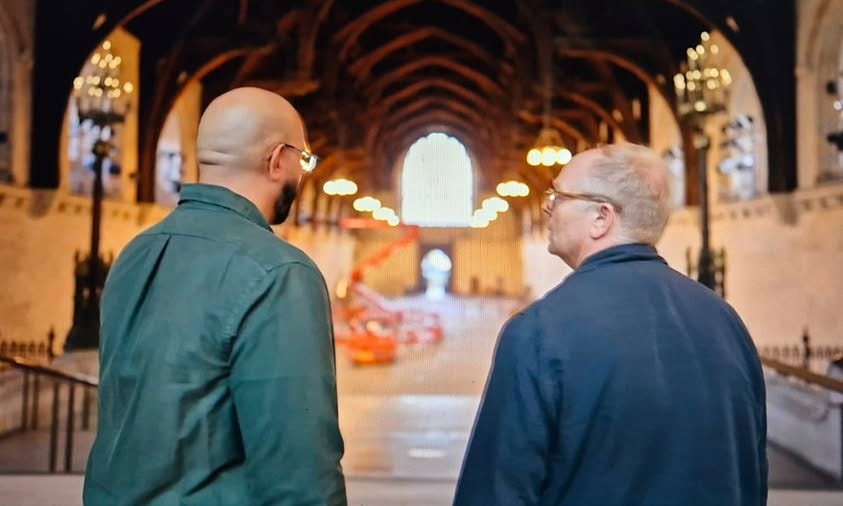
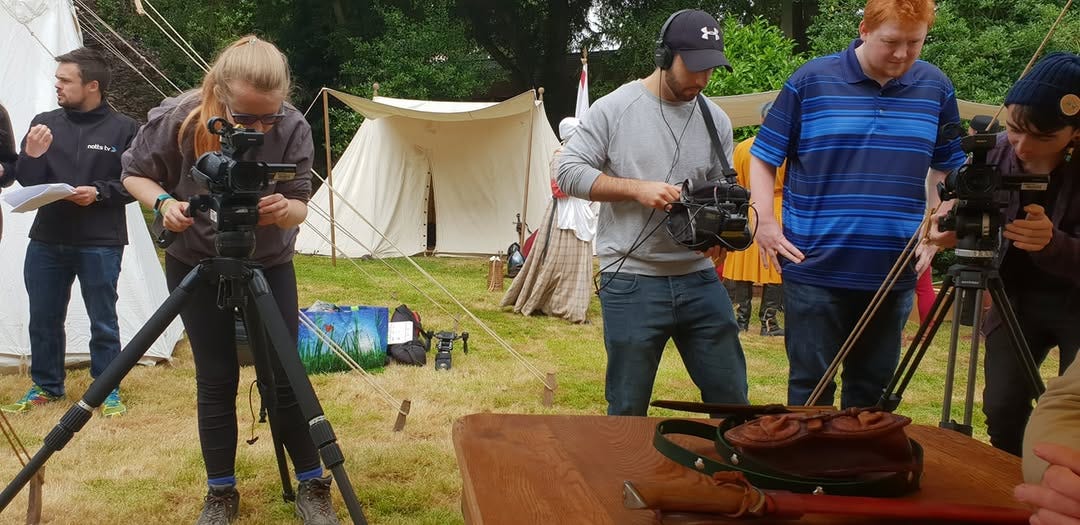
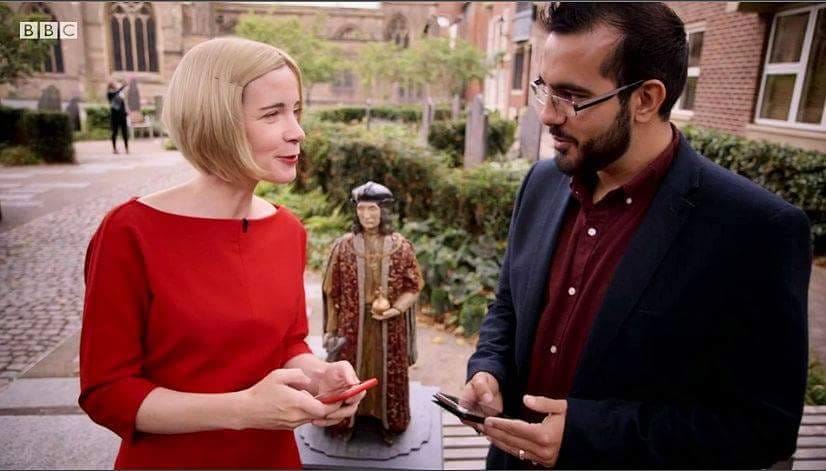
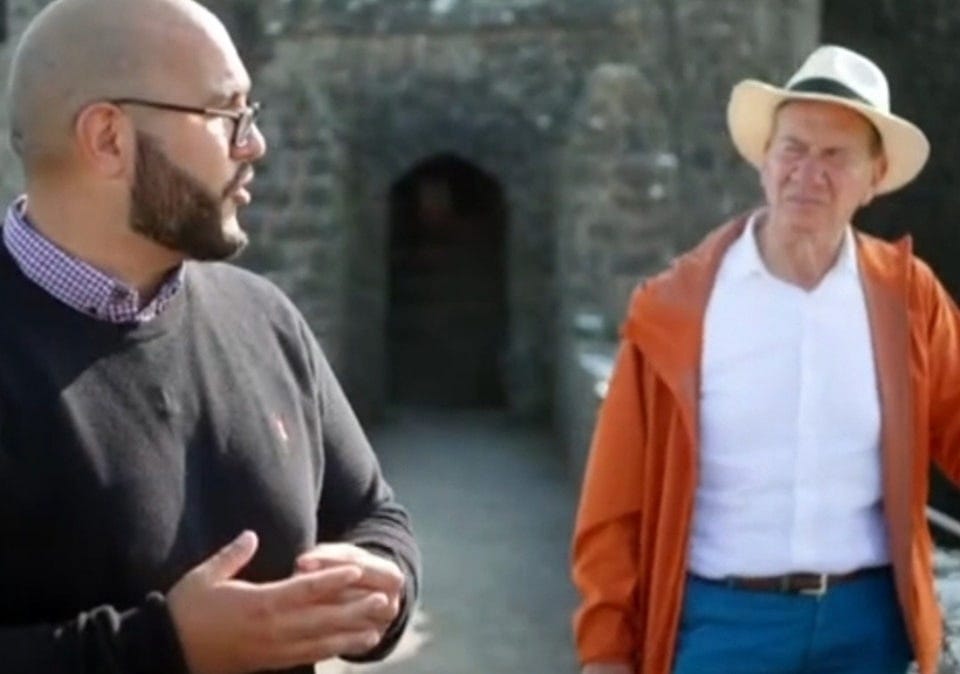
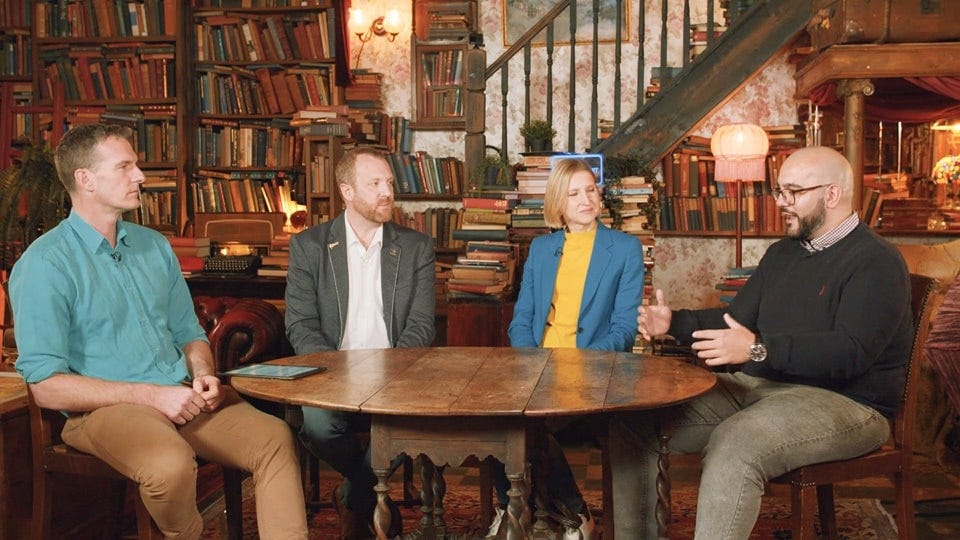
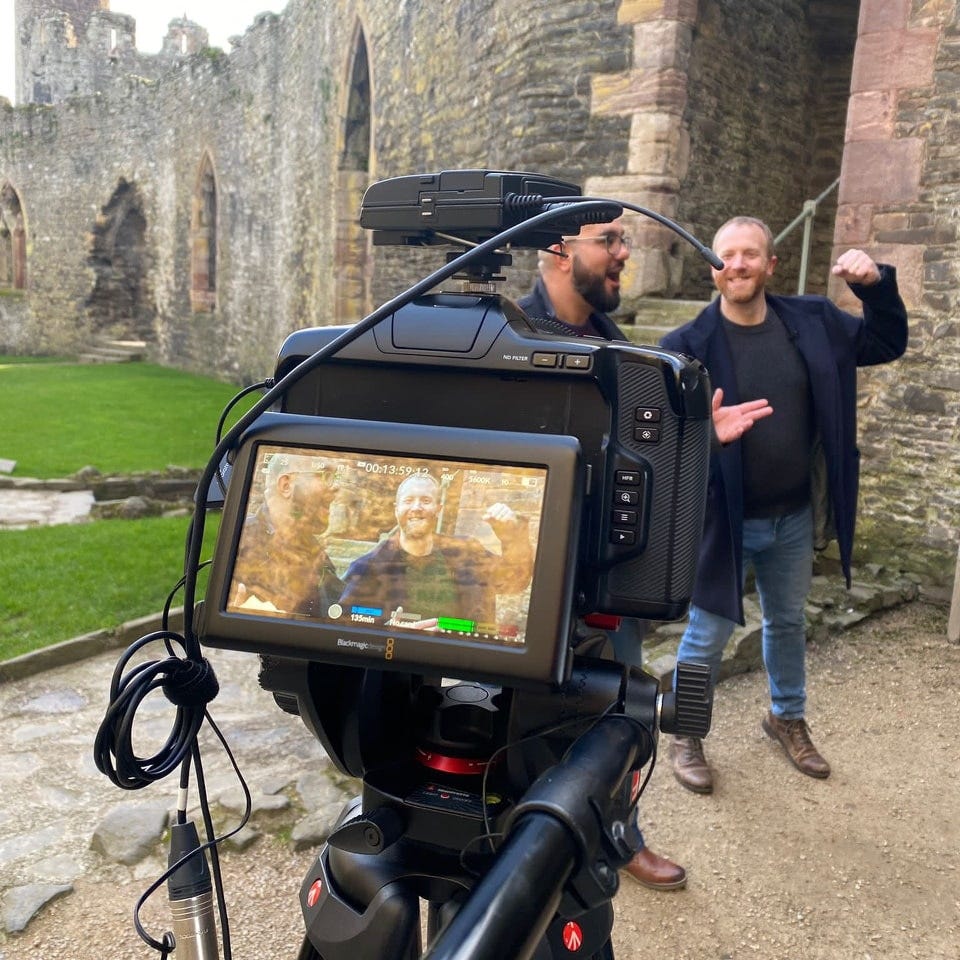
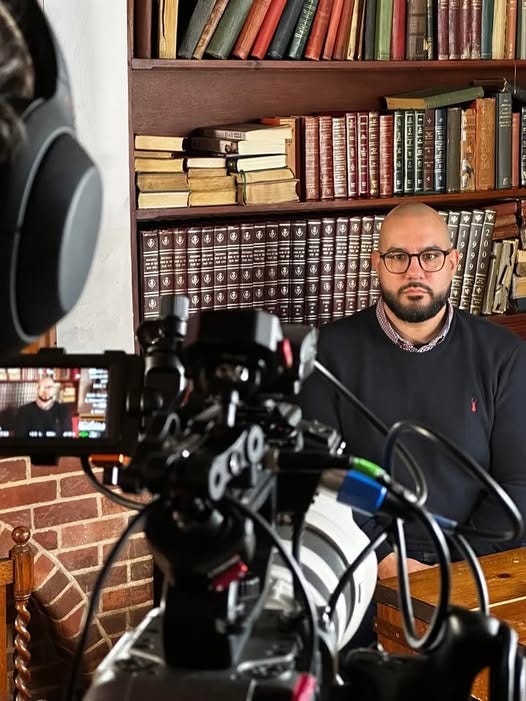
Thank you, Nathen for a detailed and interesting background to the making of documentaries. It seems to me that the production teams have more of an agenda than the historians presenting the documentary. It must be stressful and very difficult to remain calm when constantly having to reset during a longer piece, especially if someone walks onto the shot. I would have hoped members of the public would be better controlled by security barriers and personnel. At the end of the day, your safety is more important than the crowd wanting attention. It's interesting reading about the process and the pressures to do or say something you may not want to. In one documentary on Netflix the talking heads were giving commentary and context which often didn't match the drama being recreated. The plus side I guess, you get to film inside some beautiful locations you may not normally have time to visit or the opportunity to see when you are there alone.
A very interesting and comprehensive overview of the recording process though you did not mention the technique whereby actors in costume sometimes appear as the historical figures discussed. For me , this can be a bugbear when I get annoyed that the actors do not, in my opinion , resemble the historical persons and also errors in the historical costume ! Again , many thanks for a very informative post. I love documentaries on a wide range of historical subjects , and they have been great way to extend my knowledge eg a few years ago I watched a brilliant series of programmes telling the narrative of the American Civil war .